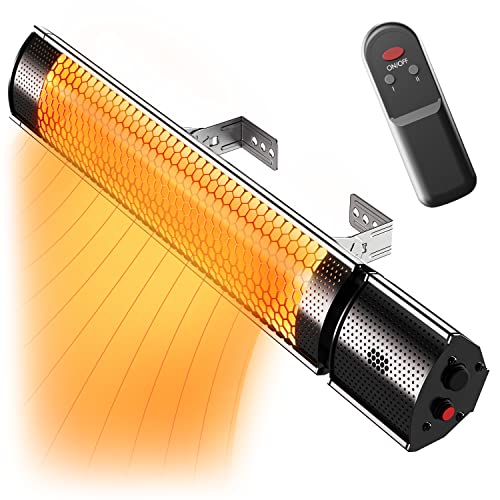How to Choose a Patio Heat Lamp Electric
There are many options available when you want to heat your patio. Electric heaters are more efficient than propane models which require refueling. They can be heated in a matter of minutes by pressing a button, or flicking the switch.
They also don't release gasses that could pose a health risk. Certain units come with adjustable heat settings to accommodate different distances.
Heater Type
You can relax in your outdoor living space well into the evening and throughout the year with the proper patio heater. Patio heaters are available in many different types, including freestanding propane or natural gas models, as well as ceiling or wall mounted electric radiant heaters. Your choice will be based on the dimensions of the space, power sources and personal preference.
Most patio heaters use electricity, liquid or natural gas to generate heat. la hacienda electric patio heater emit heat through a combination convection heating and radiant heating. The heat output of patio heaters is measured in watts, which can be converted into British thermal units (BTUs), for comparison. Some models can be adjusted in heat settings to give you more flexibility.
Patio heat lamps combine the use of a burner that is mounted on a pole with an aperforated screen that reflects the flames and radiates heat downwards to warm people, objects and furniture. Some patio heat lamps include a reflective reflector over the burner and can be silvered in order to limit the amount of heat is lost upwards.
Gas patio heaters are among the most popular heaters for patios. They can heat several tables quickly and evenly. These patio heaters are portable and can run on a propane tank or be plumbed in to your natural gas line. The latter is more convenient and has lower initial costs, but requires fuel.

A growing number of homes are fitted with natural gas lines, which makes them the ideal option for those who prefer to use a gas patio heater. They are simple to install, however they require a gas line that's properly installed and operating to be secure. Natural gas heaters that are portable are available with extension hoses to overcome this limitation, but these can be a tripping danger and could create an additional fire risk when not in use.
Safety
Electric patio heaters can be used in enclosed areas since they allow heat to radiate upwards and not outward. However, they're not intended to be used on an open roof. The heater should be set at least 18" from adjacent walls or 6" from the ceiling to avoid fire hazards.
Gas and propane patio heaters are typically suitable for use in enclosed areas and are protected by a durable cover that is specifically designed for use in open air. These covers are typically made from fire-resistant canvas and have the option of having a roof that is closed. These kinds of patio heaters pose safety concerns related to the fumes and flames they create. They should be kept away from objects that ignite like chairs and curtains.
When installing an electric patio heat lamp or any kind of patio heater, be sure to follow the manufacturer's instructions and safety guidelines carefully. Be sure to select a system with UL and CSA certifications, and also read the owner's guide thoroughly. Make sure that the heater is out of reach of children and pets. Some free-standing patio heating devices such as EUROM's include a tipping safety feature that shuts down the device when it falls.
If your patio heater is connected to a natural-gas line, it is recommended to check its condition periodically and have it tested by a licensed professional to identify leaks. If the line is in need of replacement then you should hire a licensed plumbing professional. A professional will be in a position to determine if the line needs to be connected to an underground pipe or not. In addition, a professional can make sure the patio heater is plugged into an outlet that is GFCI (ground fault circuit interrupter) certified to guard against electrical fires and shocks.
Installation
The height at which a patio heater is mounted affects the amount of heat it will radiate into the area. It is crucial that the heater be mounted at a safe distance from the surface such as plastic which can deform and also wood, which can get too hot. It is possible to mount the heater on a wall, structure or other surface using traditional mounting brackets. Certain models come with a soft starter that lowers the maximum current to protect your circuits.
